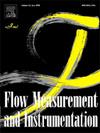用于超洁净流量泵的克瑞斯林折纸结构泵腔的设计与分析
IF 2.3
3区 工程技术
Q2 ENGINEERING, MECHANICAL
引用次数: 0
摘要
随着全球半导体制备需求的不断增长,对超净容积泵的性能要求也越来越严格,面临着排量小、能耗高、寿命低等挑战。本文提出了一种克雷林折纸结构泵腔(KOSC),继承了克雷林结构的可编程和双稳态特性,以提高超洁净容积泵的性能。通过推导数学模型,确定了双稳态的关键可编程几何设计参数。根据 ABAQUS 中的桁架杆模型进行仿真分析,得出设计参数与双稳态之间的相应关系,并通过折纸模型压缩实验验证了其准确性。然后,在 COMSOL Multiphysics 中对所提出的 KOSC 与相同高度和直径的传统波纹管进行了比较,包括压缩特性和能效的力学性能以及流固耦合分析。压缩结果表明,在相同力的条件下,KOSC 的压缩量是波纹管的 3 倍,极限压缩量(18 毫米)是波纹管的 1.8 倍,而相同压缩量下的能量仅为波纹管的一半。为了证明模拟的可靠性,我们使用波纹管进行了压缩实验。流固耦合结果表明,在等效力作用下,KOSC 的流量是波纹管的 3 倍,等速压缩时的位移是波纹管的 1.75 倍。为了证明模拟结果的可靠性,我们使用波纹管进行了泵送实验。上述模拟和实验结果证实,KOSC 可以实现大排量、低能耗,并保证延长使用寿命。本文章由计算机程序翻译,如有差异,请以英文原文为准。
Design and analysis of pump chamber with kresling origami structure for ultra-clean flow pump
With the growing global need for semiconductor preparation, the demand on the performance of ultra-clean volumetric pumps is increasingly stringent, which is facing challenges of small displacement, high energy consumption, and low lifespan. In this paper, a kresling origami structure pump chamber (KOSC) is proposed, inheriting programmable and bistable characteristics of kresling structure to enhance the ultra-clean volumetric pump performance. The key programmable geometric design parameters for bistable state are identified by deriving the mathematical model. Simulation analysis is carried out based on the truss rod model in ABAQUS to get the relationship between the design parameters and bistability accordingly, whose accuracy is verified by origami model compression experiments. Then, comparisons between the proposed KOSC and traditional bellows with the same height and diameter, involving the mechanical properties of compression characteristics and energy efficiency, and fluid-solid coupling analysis, are performed in COMSOL Multiphysics. The compression results show that KOSC compresses 3 times than bellows under equal force, with 1.8 times the ultimate compression amount (18 mm), and only half the energy for equal compression amount. Compression experiments were conducted using bellows to demonstrate the reliability of the simulations. The fluid-solid coupling results show that the flow rate of KOSC is 3 times than that of bellows under equal force, and with 1.75 times displacement for equal velocity compression. Pumping experiments were conducted using bellows to demonstrate the reliability of the simulations. The above simulation and experimental results confirm that the KOSC enables high displacement, low energy consumption, and guarantees an extended lifespan.
求助全文
通过发布文献求助,成功后即可免费获取论文全文。
去求助
来源期刊

Flow Measurement and Instrumentation
工程技术-工程:机械
CiteScore
4.30
自引率
13.60%
发文量
123
审稿时长
6 months
期刊介绍:
Flow Measurement and Instrumentation is dedicated to disseminating the latest research results on all aspects of flow measurement, in both closed conduits and open channels. The design of flow measurement systems involves a wide variety of multidisciplinary activities including modelling the flow sensor, the fluid flow and the sensor/fluid interactions through the use of computation techniques; the development of advanced transducer systems and their associated signal processing and the laboratory and field assessment of the overall system under ideal and disturbed conditions.
FMI is the essential forum for critical information exchange, and contributions are particularly encouraged in the following areas of interest:
Modelling: the application of mathematical and computational modelling to the interaction of fluid dynamics with flowmeters, including flowmeter behaviour, improved flowmeter design and installation problems. Application of CAD/CAE techniques to flowmeter modelling are eligible.
Design and development: the detailed design of the flowmeter head and/or signal processing aspects of novel flowmeters. Emphasis is given to papers identifying new sensor configurations, multisensor flow measurement systems, non-intrusive flow metering techniques and the application of microelectronic techniques in smart or intelligent systems.
Calibration techniques: including descriptions of new or existing calibration facilities and techniques, calibration data from different flowmeter types, and calibration intercomparison data from different laboratories.
Installation effect data: dealing with the effects of non-ideal flow conditions on flowmeters. Papers combining a theoretical understanding of flowmeter behaviour with experimental work are particularly welcome.
 求助内容:
求助内容: 应助结果提醒方式:
应助结果提醒方式:


